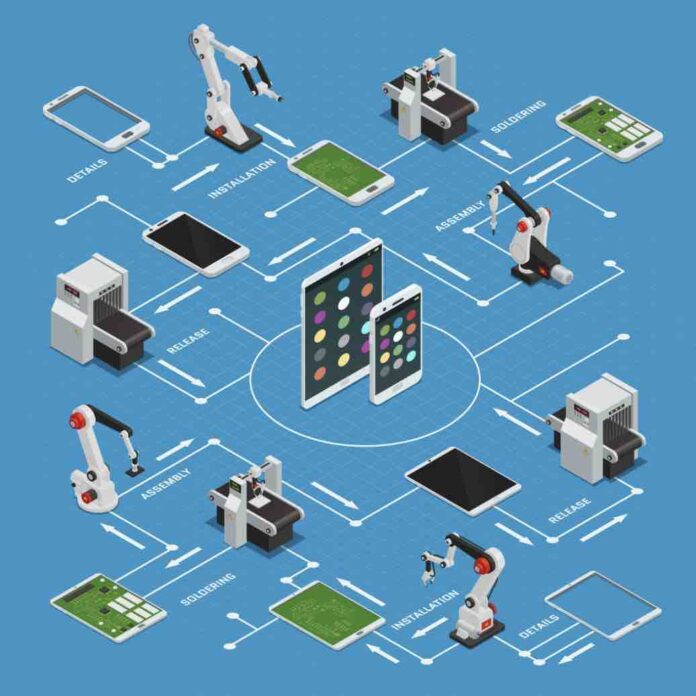In the ever-evolving landscape of industrial technology, the concept of Industrial Internet of Things (IIoT) has emerged as a game-changer, revolutionizing the way equipment is utilized and managed in various sectors. This article aims to provide a comprehensive overview of IIoT-enabled equipment and its pivotal role in the year 2024.
Understanding IIoT-Enabled Equipment
IIoT-enabled equipment refers to industrial machinery and devices that are equipped with sensors, actuators, and connectivity capabilities, allowing them to collect and exchange data in real-time. These devices are connected to a network infrastructure, enabling remote monitoring, control, and optimization of industrial processes. By leveraging advanced analytics and machine learning algorithms, IIoT-enabled equipment enables predictive maintenance, improves operational efficiency, and enhances decision-making in industrial settings.
Key Components of IIoT-Enabled Equipment
The key components of IIoT-enabled equipment include:
- Sensors and Actuators: Sensors capture various parameters such as temperature, pressure, vibration, and humidity, while actuators enable control and automation of physical processes.
- Connectivity: IIoT devices are equipped with communication protocols such as Wi-Fi, Bluetooth, Ethernet, or cellular connectivity, allowing them to transmit data to centralized systems or cloud platforms.
- Edge Computing: Edge computing capabilities enable data processing and analysis at the device level, reducing latency and bandwidth requirements while enhancing real-time decision-making.
- Cloud Platforms: Data collected from IIoT-enabled equipment is transmitted to cloud-based platforms for storage, analysis, and visualization. Cloud platforms provide scalable infrastructure and advanced analytics tools for extracting actionable insights from large volumes of data.
- Security Measures: IIoT devices incorporate robust security measures to protect data integrity, confidentiality, and availability. This includes encryption, authentication, and access control mechanisms to mitigate cybersecurity risks.
Role of IIoT-Enabled Equipment in 2024
In 2024, IIoT-enabled equipment is expected to play a transformative role across various industries, including manufacturing, energy, transportation, healthcare, and agriculture. Some of the key roles and applications include:
- Predictive Maintenance: IIoT-enabled equipment facilitates predictive maintenance strategies by continuously monitoring equipment health and performance parameters. By detecting anomalies and predicting potential failures in advance, organizations can schedule maintenance activities proactively, minimize downtime, and optimize asset utilization.
- Remote Monitoring and Control: With IIoT-enabled equipment, industrial operators can monitor and control equipment remotely, enabling real-time visibility into operational processes. This allows for proactive intervention, troubleshooting, and optimization of production workflows, regardless of geographical location.
- Optimized Energy Management: IIoT-enabled equipment enables precise monitoring and optimization of energy consumption in industrial facilities. By analyzing energy usage patterns and identifying inefficiencies, organizations can implement targeted measures to reduce costs, enhance sustainability, and comply with regulatory requirements.
- Supply Chain Optimization: IIoT-enabled sensors and tracking devices facilitate end-to-end visibility and traceability across the supply chain. From inventory management to logistics and distribution, organizations can leverage real-time data insights to streamline operations, improve resource allocation, and enhance supply chain resilience.
- Enhanced Safety and Compliance: IIoT-enabled equipment plays a crucial role in enhancing workplace safety and regulatory compliance. By monitoring environmental conditions, detecting safety hazards, and implementing automated safety protocols, organizations can mitigate risks, prevent accidents, and ensure compliance with industry regulations.
Future Trends and Developments
Looking ahead, the evolution of IIoT-enabled equipment is expected to be driven by advancements in sensor technologies, connectivity standards, and data analytics capabilities. Additionally, emerging trends such as edge computing, artificial intelligence, and digital twins are poised to further enhance the functionality and value proposition of IIoT solutions. As organizations continue to prioritize digital transformation initiatives, IIoT-enabled equipment will remain at the forefront of innovation, driving operational excellence and competitive advantage in the industrial sector.
Conclusion
In conclusion, IIoT-enabled equipment represents a paradigm shift in industrial technology, enabling organizations to unlock new levels of efficiency, productivity, and innovation. As we enter the year 2024, IIoT solutions are poised to play an increasingly pivotal role across diverse industries, reshaping operational processes, and driving sustainable growth. By harnessing the power of IIoT-enabled equipment, organizations can navigate the complexities of the modern industrial landscape, capitalize on new opportunities, and achieve operational excellence in the digital age.



